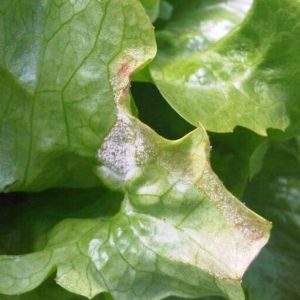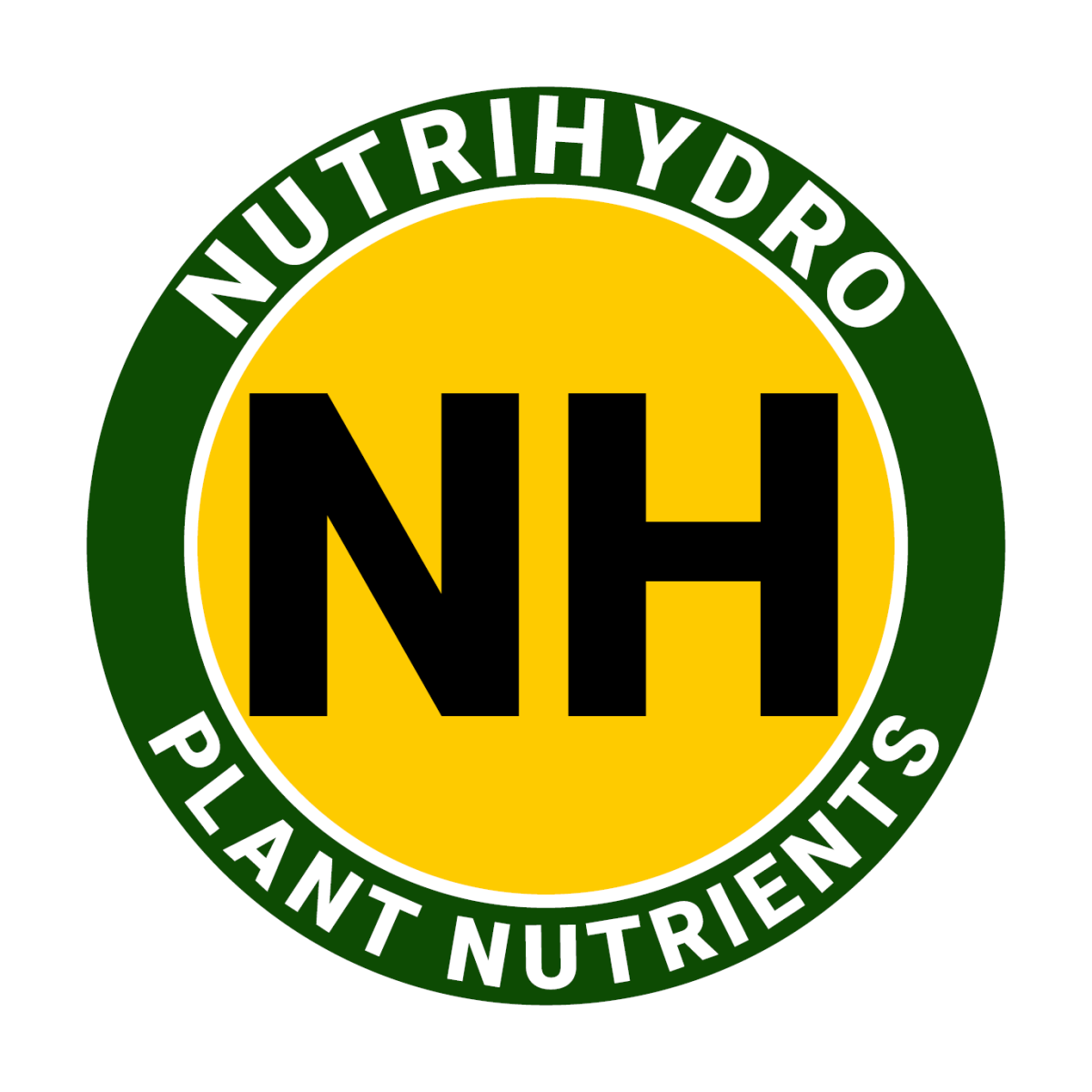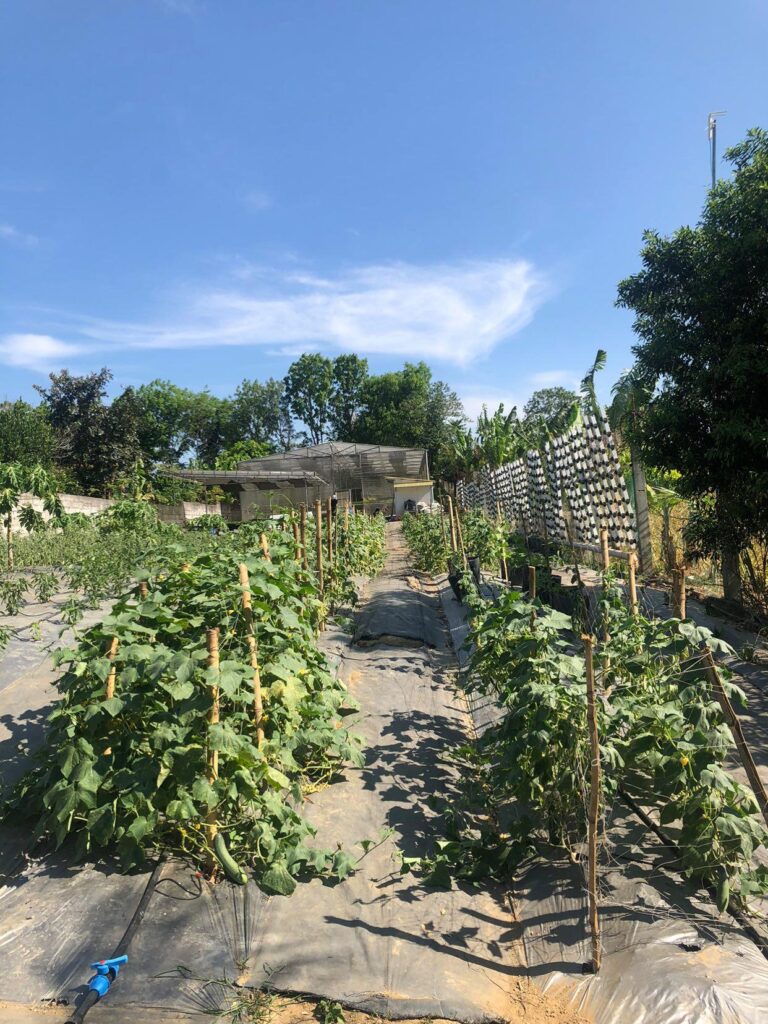Powdery Mildew : Wilt & Die Series
 Powdery Mildew, also known as Oidium or White Rust, is a prevalent disease that significantly impacts many plant species, including lettuce. In a commercial context, Powdery Mildew can significantly affect lettuce yields, quality, and consequently, the economic dynamics of the industry.
Powdery Mildew, also known as Oidium or White Rust, is a prevalent disease that significantly impacts many plant species, including lettuce. In a commercial context, Powdery Mildew can significantly affect lettuce yields, quality, and consequently, the economic dynamics of the industry.
Causes and Transmission of Powdery Mildew
Powdery Mildew in lettuce is primarily caused by the fungi Erysiphe cichoracearum and Golovinomyces cichoracearum. These pathogens are airborne and have a wide host range. They thrive in warm, dry conditions, where their spores can easily spread from plant to plant. Once the spores land on a susceptible host, they germinate, sending hyphae into the epidermal cells of the plant to extract nutrients, causing the characteristic symptoms of Powdery Mildew.
Symptoms of Powdery Mildew
In lettuce, Powdery Mildew first appears as white, powdery spots on the leaves, stems, and occasionally, flowers. These spots often expand, eventually covering large parts of the plant’s surface. As the disease progresses, the white powdery growth turns yellow-brown and may become felt-like in texture. In severe cases, infected leaves can become distorted, turn yellow, and prematurely drop off, resulting in reduced yield and lower marketable quality.
Economic Impact of Powdery Mildew
The economic impact of Powdery Mildew on the lettuce industry is substantial. In the United States, for example, leafy vegetables, including lettuce, contribute over $2 billion annually to the agricultural economy. Given that Powdery Mildew can decrease yields by up to 30%, the financial implications can be significant.
Furthermore, poor lettuce quality due to Powdery Mildew can lead to reduced market prices and increased wastage, exacerbating economic losses. More broadly, outbreaks can disrupt supply chains, potentially leading to price instability and negatively affecting consumer access to fresh lettuce.
Managing Powdery Mildew
Successfully managing Powdery Mildew involves a comprehensive approach incorporating multiple strategies:
Cultural Practices: Implementing effective sanitation practices, such as removing and destroying infected plant material, can reduce the number of fungal spores in the growing area. It’s also essential to avoid overcrowding plants and to manage humidity levels, as these conditions can facilitate the spread of the disease.
Use of Fungicides: Fungicides can be used as a preventative measure or to control existing infections. However, repeated use can lead to the development of resistant fungal strains, so it’s essential to rotate different classes of fungicides to delay resistance.
Resistant Varieties: Planting resistant lettuce varieties is a sustainable and effective way to manage Powdery Mildew.
Biological Control: Several biological control agents, such as certain Bacillus species, have shown efficacy against Powdery Mildew, offering an environmentally friendly management option.
NutriHydro Products: Using the NutriHydro Lettuce formula, NutriHydro pH Control, and NutriHydro Biostimulants can play a vital role in bolstering plant health. NutriHydro Lettuce Formula ensures optimal nutrition, while NutriHydro pH Control maintains the ideal pH range for nutrient uptake. NutriHydro Biostimulants enhance plant resistance, boosting their innate defense mechanisms against diseases like Powdery Mildew.
In conclusion, while Powdery Mildew poses significant challenges to lettuce growers, a comprehensive management approach and optimal plant nutrition can effectively mitigate this disease’s risks.
Author
Christopher Tuason
Christopher Tuason
NutriHydro is a manufacturer of plant nutrients based in the Philippines. They are known to grow the healthiest, heaviest, and largest lettuce in the country. NutriHydro products are available to purchase from the following e-commerce platforms.
Lazada: bit.ly/3asMYXN
Shopee: bit.ly/3nRJX6Z
Basilyard: bit.ly/346Kklw
NutriHdyro Website: bit.ly/434MoY6





